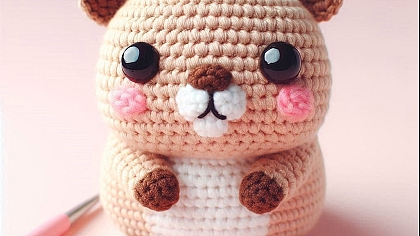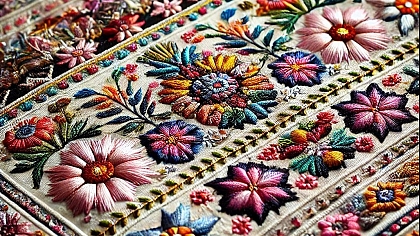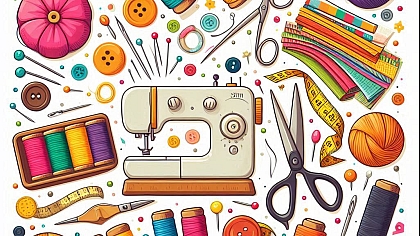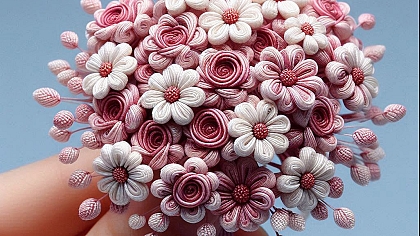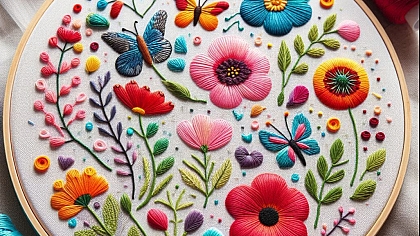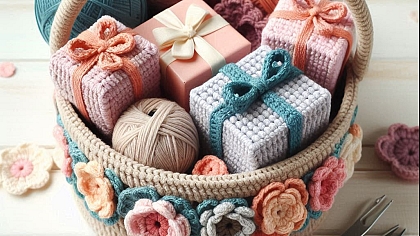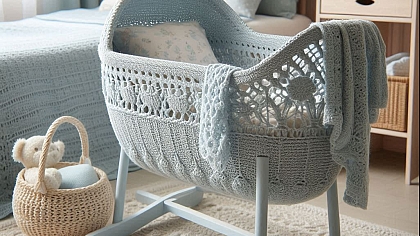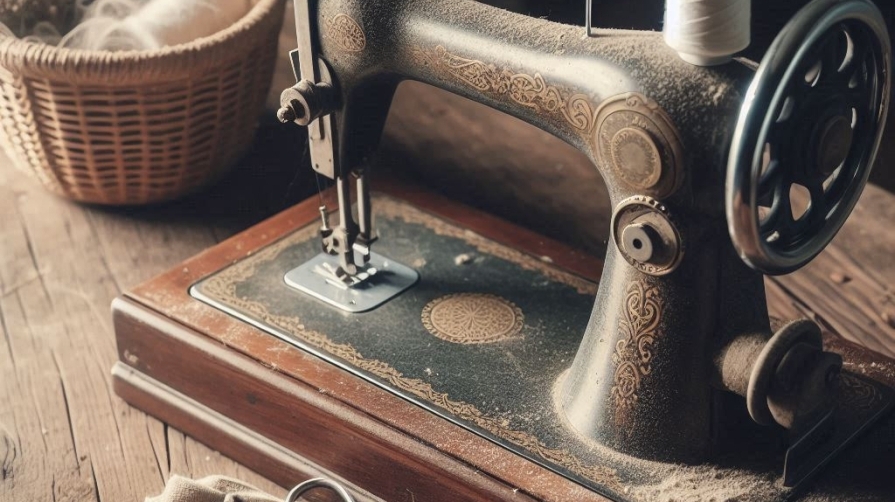
Sewing Machine Maintenance: Keep Your Machine Running Smoothly
Sewing machines are invaluable tools for hobbyists and professionals alike, transforming fabric and thread into wearable art, home décor, and countless other creations. However, like any piece of machinery, they require regular maintenance to function efficiently and extend their lifespan. This comprehensive guide delves into the essential aspects of sewing machine maintenance, ensuring your machine remains a reliable partner in your creative endeavors.
Understanding Your Sewing Machine
Before delving into the specifics of maintenance, it's crucial to familiarize yourself with the basic components of your sewing machine. Each part plays a vital role in the machine's operation, and understanding their functions can help you troubleshoot issues and perform maintenance more effectively.
The needle is the heart of the sewing machine, piercing the fabric and forming stitches. The presser foot holds the fabric in place, while the feed dogs move it along as you sew. The bobbin, located beneath the needle plate, supplies the lower thread, working in tandem with the needle thread to create stitches. The tension discs regulate the tension of the thread, ensuring even stitches, and the throat plate guides the needle and feed dogs.
Recognizing these parts and their functions is the first step in mastering sewing machine maintenance. By understanding how each component contributes to the overall operation, you can better identify and address potential issues.
Routine Cleaning: Keeping Your Machine Dust-Free

One of the simplest yet most effective maintenance tasks is routine cleaning. Dust, lint, and fabric fibers accumulate inside the machine over time, potentially causing malfunctions and reducing efficiency. Regular cleaning prevents these issues, ensuring smooth operation and extending the machine's lifespan.
Start by unplugging your machine to ensure safety. Remove the presser foot, needle, and throat plate to access the feed dogs and bobbin area. Use a small, soft brush to gently remove lint and dust from these areas, being careful not to damage any components. A vacuum with a small attachment can also be effective in extracting debris from hard-to-reach places.
For thorough cleaning, consult your machine's manual for instructions on removing the bobbin case and other removable parts. Clean these components individually, ensuring all lint and debris are removed. Reassemble the machine carefully, following the manual's guidance.
Oiling: The Lubrication Essential
Lubrication is another crucial aspect of sewing machine maintenance. Moving parts require regular oiling to function smoothly and prevent wear and tear. However, not all sewing machines require oiling; modern machines often have self-lubricating components. Consult your machine's manual to determine its oiling needs.
If your machine requires oiling, use sewing machine oil specifically designed for this purpose. Avoid using household oils, which can gum up the machine and cause damage. Apply a small amount of oil to the designated points, typically indicated in the manual. Be cautious not to over-oil, as excess oil can attract dust and lint.
After oiling, run a few stitches on a scrap piece of fabric to distribute the oil evenly and absorb any excess. This step ensures the machine operates smoothly and prevents oil stains on your projects.
Tension Adjustment: Achieving Perfect Stitches
Tension adjustment is a common challenge for sewing machine users. Incorrect tension can lead to uneven stitches, thread breakage, and fabric puckering. Understanding how to adjust tension is essential for maintaining stitch quality and preventing frustration.
The tension discs control the tightness of the thread as it passes through the machine. If the upper thread tension is too tight, the fabric may pucker, and the thread may break. Conversely, if the tension is too loose, the stitches may be uneven or loop on the underside.
To adjust the tension, start by setting it to the default position, usually indicated in the manual. Test the stitches on a scrap piece of fabric, examining both the upper and lower sides. Adjust the tension incrementally, testing the stitches after each adjustment until the desired result is achieved. Patience and practice are key to mastering tension adjustment.
Needle Care: Ensuring Sharpness and Precision

The needle is a critical component that directly impacts stitch quality. A dull or damaged needle can cause skipped stitches, fabric damage, and thread breakage. Regularly changing the needle and selecting the appropriate type for your project are essential maintenance tasks.
Needles should be replaced after every eight hours of sewing or at the first sign of damage. Different fabrics and threads require specific needle types and sizes; using the wrong needle can affect stitch quality and potentially damage your machine. Consult your machine's manual or a needle guide to select the appropriate needle for your project.
Installing the needle correctly is equally important. Ensure the needle is inserted with the flat side facing the back and pushed up as far as it will go. Tighten the needle clamp securely to prevent the needle from shifting during sewing.
Bobbin Care: Ensuring Smooth Threading
The bobbin is an often-overlooked component that plays a vital role in stitch formation. Proper bobbin care is essential for smooth operation and stitch quality. Incorrect bobbin winding, installation, or thread tension can lead to various issues, including thread jams and uneven stitches.
Start by ensuring the bobbin is wound evenly and tightly. Unevenly wound bobbins can cause thread tension problems and affect stitch quality. Use the bobbin winder on your machine to achieve a consistent wind, and avoid overfilling the bobbin.
When installing the bobbin, follow the manual's instructions carefully. Ensure the bobbin thread is correctly threaded through the bobbin case tension spring, which regulates the lower thread tension. Incorrect threading can lead to stitch irregularities and thread breakage.
Thread Quality: Choosing the Right Materials
Using high-quality thread is an often-overlooked aspect of sewing machine maintenance. Cheap or old thread can cause lint buildup, thread breakage, and tension issues. Investing in quality thread can prevent these problems and improve stitch quality.
Choose thread appropriate for your project, considering the fabric type and sewing technique. Cotton thread is ideal for natural fibers, while polyester thread works well with synthetic fabrics. Specialty threads, such as silk or metallic, require specific needles and tension adjustments.
Store your thread properly to prevent damage. Keep it in a cool, dry place, away from direct sunlight, which can weaken the fibers. Discard old or damaged thread to avoid problems during sewing.
Electrical Components: Ensuring Safe Operation

Sewing machines, particularly modern ones, rely on electrical components for various functions. Maintaining these components is essential for safe and efficient operation. Regular inspection and proper care can prevent electrical issues and prolong the machine's lifespan.
Start by inspecting the power cord and foot pedal for signs of wear or damage. Frayed cords or malfunctioning pedals can pose safety hazards and affect machine performance. Replace damaged components promptly to ensure safe operation.
Clean the control panel and other electronic parts with a soft, dry cloth. Avoid using liquids or abrasive materials, which can damage the electronics. If your machine has computerized features, ensure the software is up-to-date, following the manufacturer's instructions.
Professional Servicing: When to Seek Expert Help
While regular maintenance can address many issues, professional servicing is sometimes necessary. Experienced technicians can perform thorough inspections, diagnose complex problems, and perform repairs beyond your capabilities. Knowing when to seek professional help is crucial for maintaining your sewing machine's health.
Schedule a professional servicing at least once a year, even if your machine appears to be functioning well. Technicians can identify and address potential issues before they become major problems, ensuring your machine operates smoothly.
If you encounter persistent issues despite regular maintenance, seek professional assistance. Complex problems, such as timing issues or motor malfunctions, require expert knowledge and tools. Attempting to fix these problems yourself can lead to further damage and void the machine's warranty.
Storing Your Sewing Machine: Ensuring Longevity

Proper storage is essential for maintaining your sewing machine's condition, especially if you don't use it frequently. Dust, moisture, and improper handling can cause damage, affecting the machine's performance and lifespan. Follow these guidelines to ensure your machine remains in top condition during storage.
Always store your machine in a dust-free environment. Use a dust cover or case to protect it from dust and debris when not in use. If you live in a humid climate, consider using a dehumidifier in your sewing area to prevent moisture buildup, which can cause rust and electrical issues.
Store the machine in an upright position on a stable surface. Avoid placing heavy objects on top of the machine, which can damage the components. If you need to transport the machine, use its original packaging or a padded carrying case to protect it from shocks and vibrations.
Troubleshooting Common Issues
Despite regular maintenance, you may encounter occasional problems with your sewing machine. Knowing how to troubleshoot common issues can save time and frustration, allowing you to get back to your projects quickly.
One common problem is thread jams, often caused by incorrect threading, tangled thread, or lint buildup. Start by rethreading the machine, ensuring both the upper thread and bobbin are correctly threaded. Remove any tangled thread and clean the bobbin area thoroughly.
Skipped stitches can result from a dull needle, incorrect needle size, or improper threading. Replace the needle, ensuring it's appropriate for your fabric, and rethread the machine carefully. If the problem persists, check the tension settings and adjust as needed.
Uneven stitches are often caused by incorrect tension, poor thread quality, or lint buildup. Adjust the tension settings, using high-quality thread, and clean the machine regularly. If the issue continues, consult your manual or seek professional help.
Developing a Maintenance Routine
Establishing a regular maintenance routine is the key to keeping your sewing machine running smoothly. Consistent care not only prevents problems but also enhances your sewing experience, allowing you to focus on your creativity rather than dealing with machine issues.
Incorporate basic cleaning and oiling into your routine after each major project or every few weeks of regular use. Keep a small toolkit, including brushes, sewing machine oil, and spare needles, handy for quick maintenance tasks. Regularly inspect your machine for signs
of wear or damage, addressing issues promptly to prevent further complications.
Schedule annual professional servicing to ensure your machine receives comprehensive care. Keep a log of maintenance tasks and servicing dates, helping you track the machine's condition and anticipate future needs.
A Smooth-Running Machine for Seamless Sewing

Sewing machine maintenance is a vital practice that ensures your machine remains a reliable and efficient tool in your creative arsenal. By understanding the components, performing routine cleaning and oiling, adjusting tension, and caring for needles and thread, you can prevent common issues and enhance stitch quality. Proper storage, regular professional servicing, and a consistent maintenance routine will prolong your machine's lifespan, allowing you to enjoy seamless sewing for years to come.
Investing time in sewing machine maintenance not only protects your investment but also enhances your sewing experience. With a well-maintained machine, you can focus on your projects, confident in the knowledge that your trusty sewing companion will perform flawlessly. Embrace the practice of regular maintenance, and your sewing machine will reward you with smooth, trouble-free operation, bringing your creative visions to life with precision and ease.

